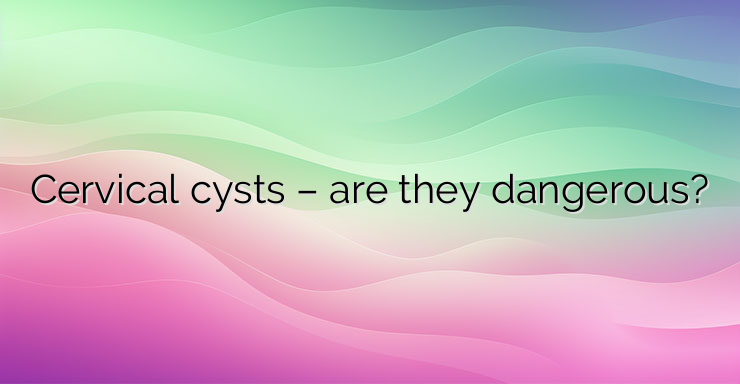Cervical cysts or so-called Nabothian cysts are common benign growths that usually pose no danger to the patient and are unrelated to cervical cancer. The cervix connects the vagina with the uterine cavity and is about 3-4 cm long. The cervix can be conditionally divided into two parts – exo- and endocervix. The term endocervix refers to the part of the cervix located above the vagina, and the term exocervix refers to the part of the cervix that enters the vagina. Characteristic of the endocervix is that it is covered by a single-layered columnar epithelium, and the exocervix is covered by a multilayered squamous neuroprotective epithelium. Nabothian cysts are mucus-filled masses that are secreted by the cervical glands. They usually form when epithelium from the exocervix grows into the area of the endocervix, causing the cervical glands to become blocked and small, white bumps to form. Nabothian cysts can range in size from a few millimeters to about 4 cm. Their color can vary from white to yellowish, and most often they are multiple. What are the causes and risk factors for the formation of cervical cysts? The main group among which Nabothian cysts are observed are women who have given birth and women of childbearing age. Another reason for the formation of cervical cysts can be physical trauma to the area, which causes the growth of connective tissue that clogs the openings of the cervical glands and blocks the secretion of mucus. Cystitis caused by physical trauma is especially common when recovering from chronic cervicitis. What are the most common symptoms in patients with Nabothian cysts? Cervical glands do not manifest themselves with characteristic symptoms – they do not cause pain or any other discomfort, which is why their diagnosis is accidental during a pelvic examination by an obstetrician-gynecologist. Symptoms may occur only with larger or numerous cysts. Among the symptoms that may occur are unusual uterine bleeding, pain during intercourse, pain during a pelvic exam. Cervical cysts are usually diagnosed during a pelvic exam and examination of the vagina and cervix with a speculum. Transvaginal ultrasonography is also a basic diagnostic method. If a malignant process is suspected, it is necessary to take material for biopsy – the condition that the obstetrician-gynecologist may suspect is adenoma malignum (mucinous adenocarcinoma of the cervix), which is a very rare disease. Since Nabothian cysts are benign formations, they do not need specific treatment, as they rarely cause unpleasant symptoms. In very rare cases, when they are symptomatic and make pelvic examination impossible, cervical cysts are subject to therapy. Therapeutic methods include:- Electrocauterization – cysts are removed by burning with electric current; – Cryotherapy – removal of cysts using liquid nitrogen; – Surgical removal. Nabothian cysts are benign formations that, in the greater percentage of cases, are asymptomatic, have no potential for malignancy, and do not require treatment.


Leave a Reply